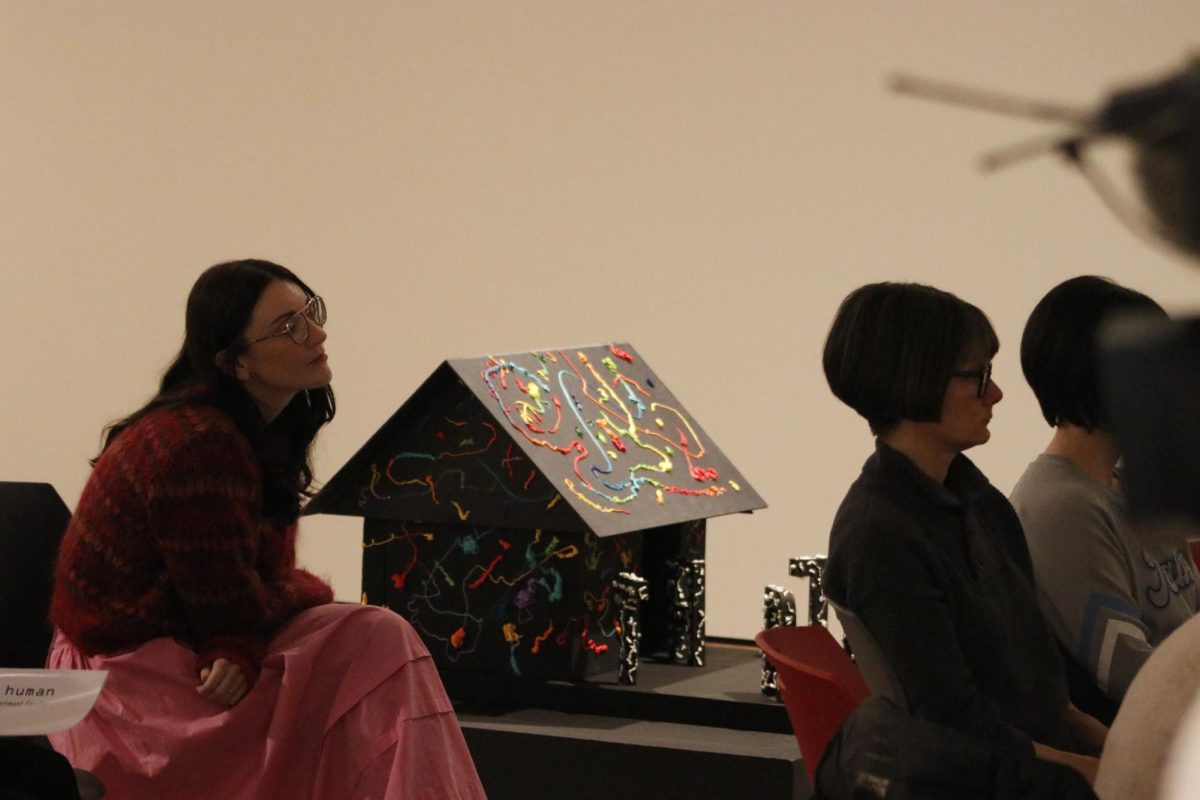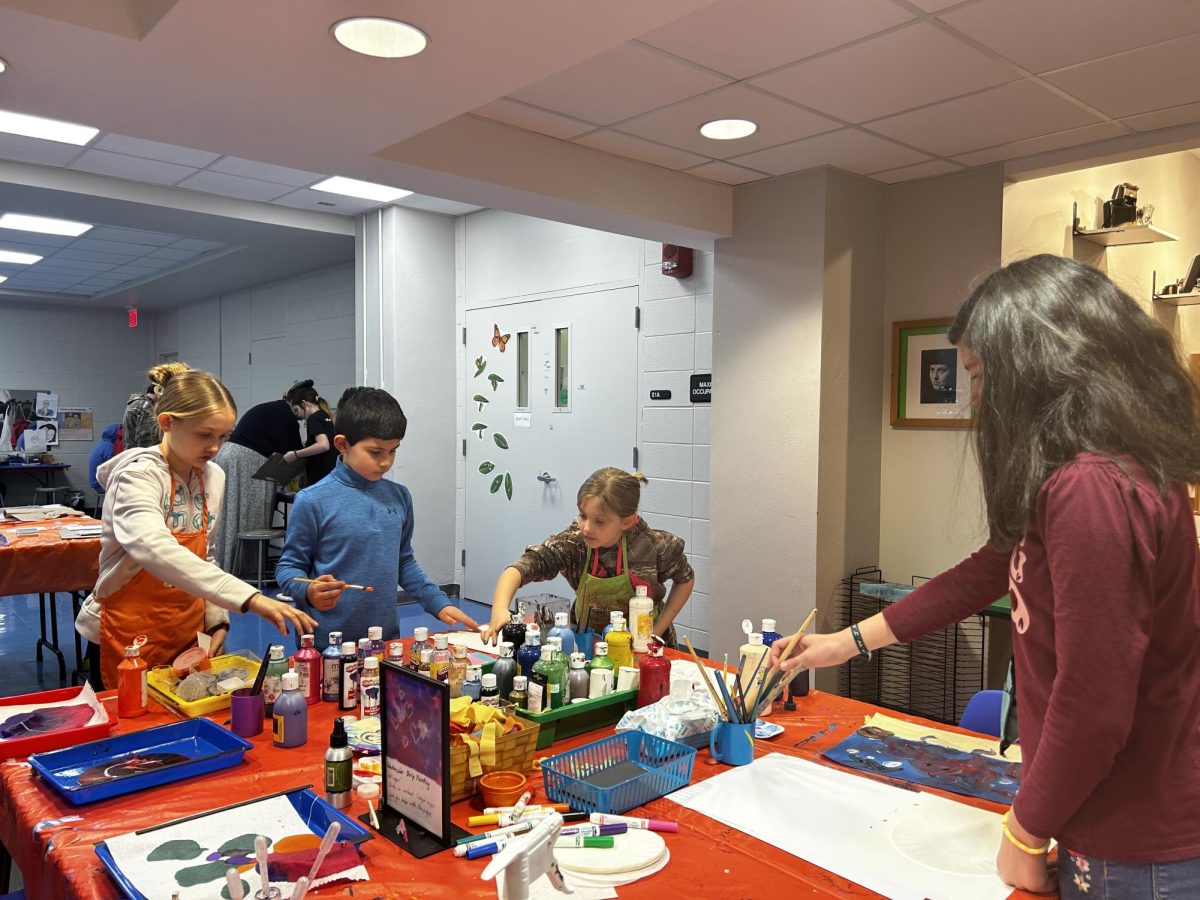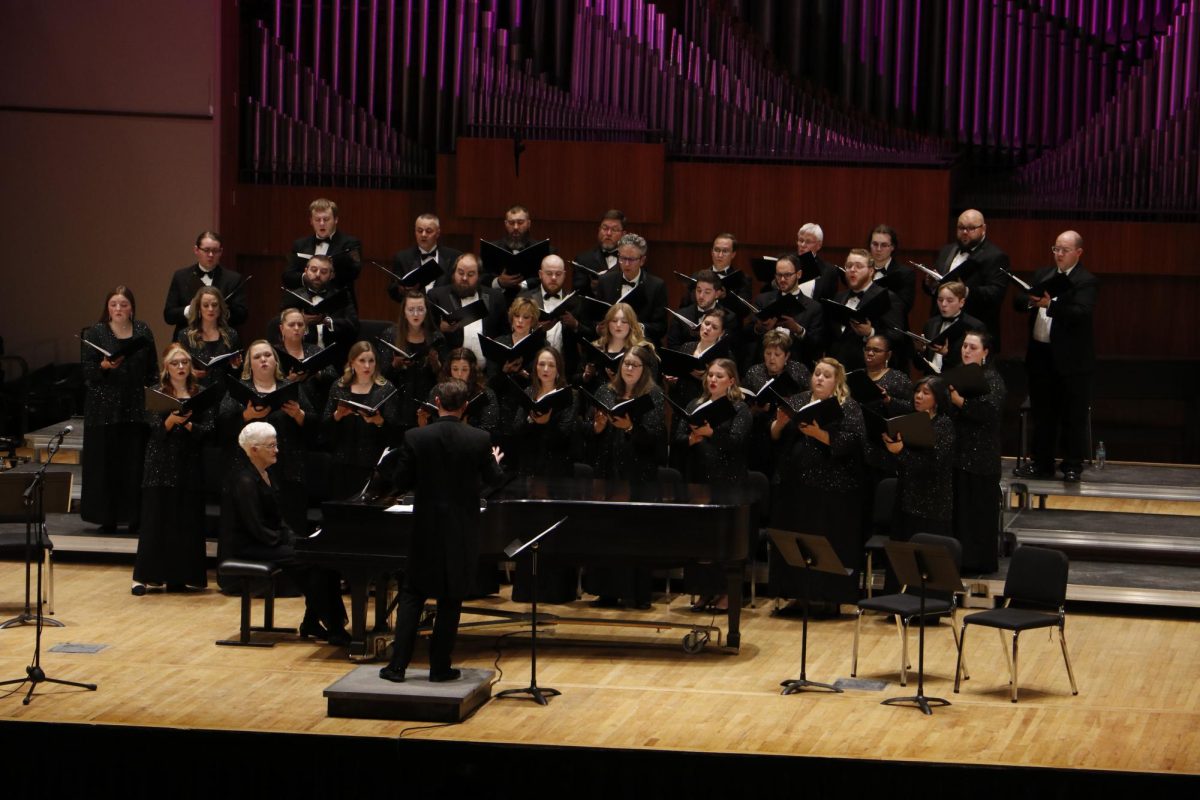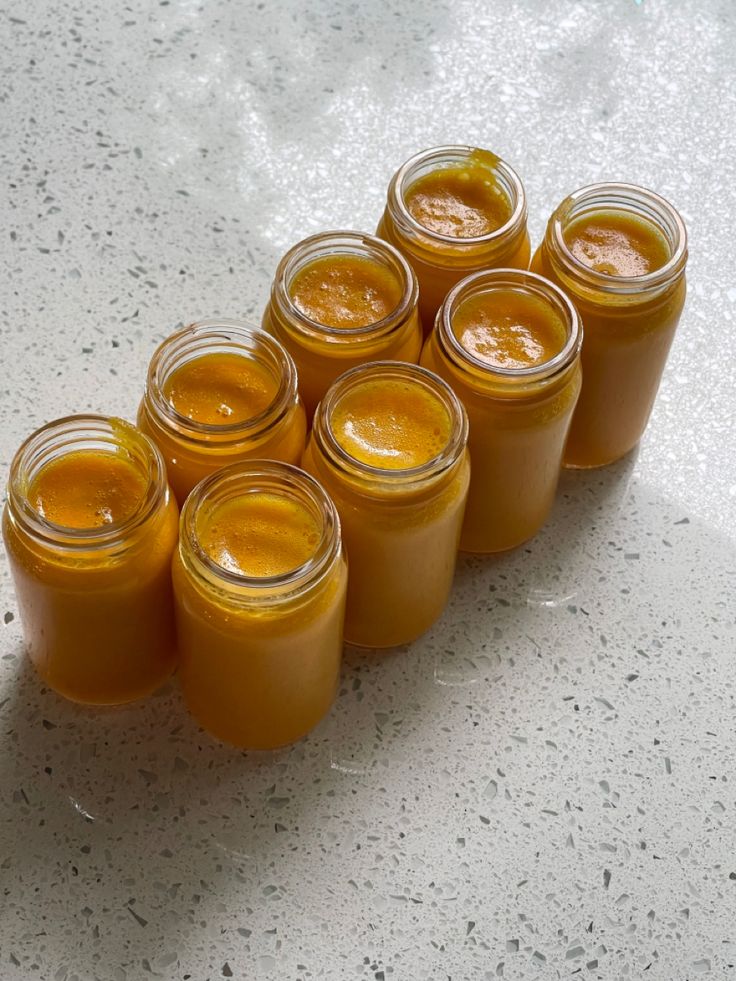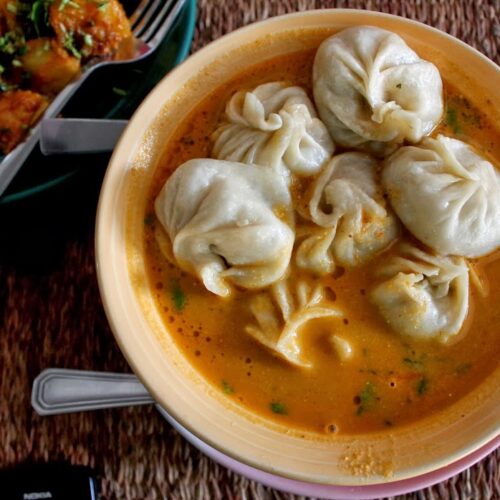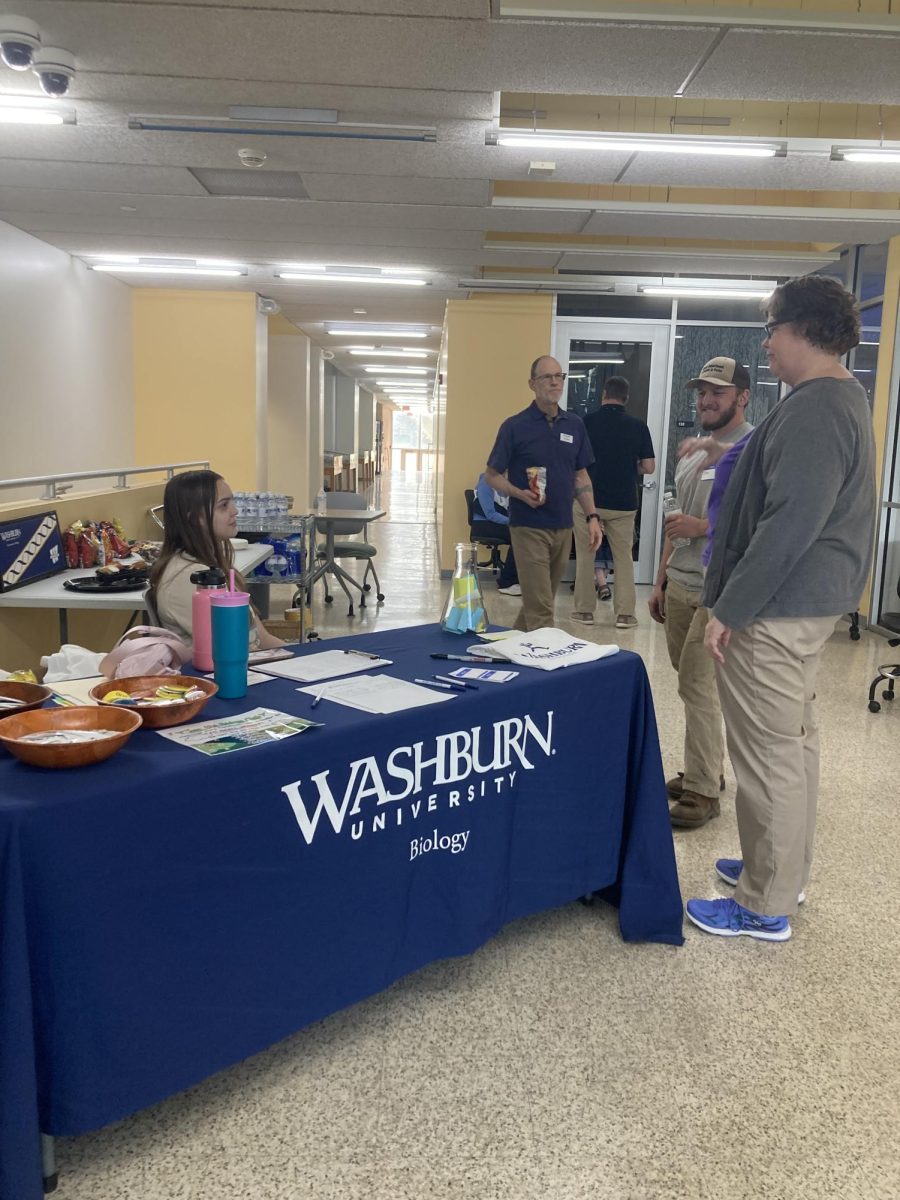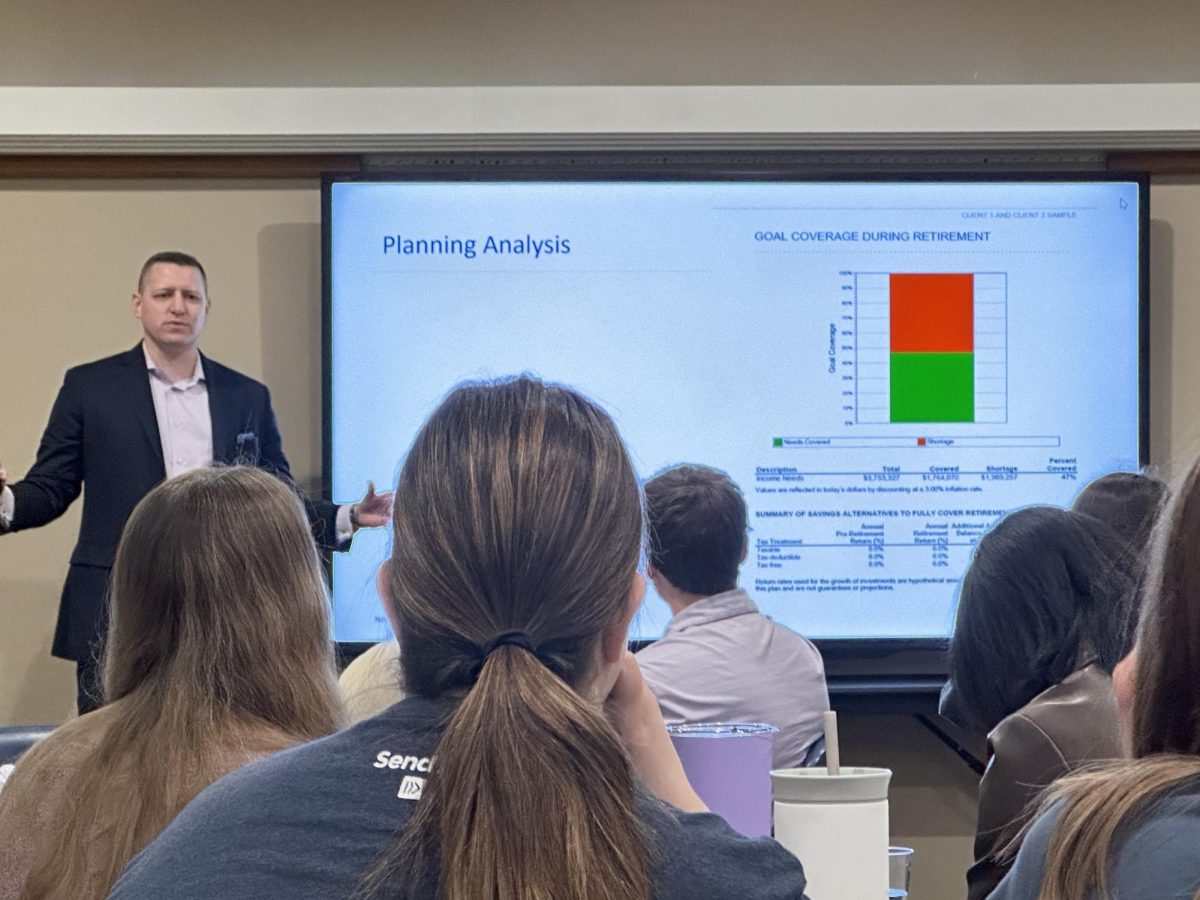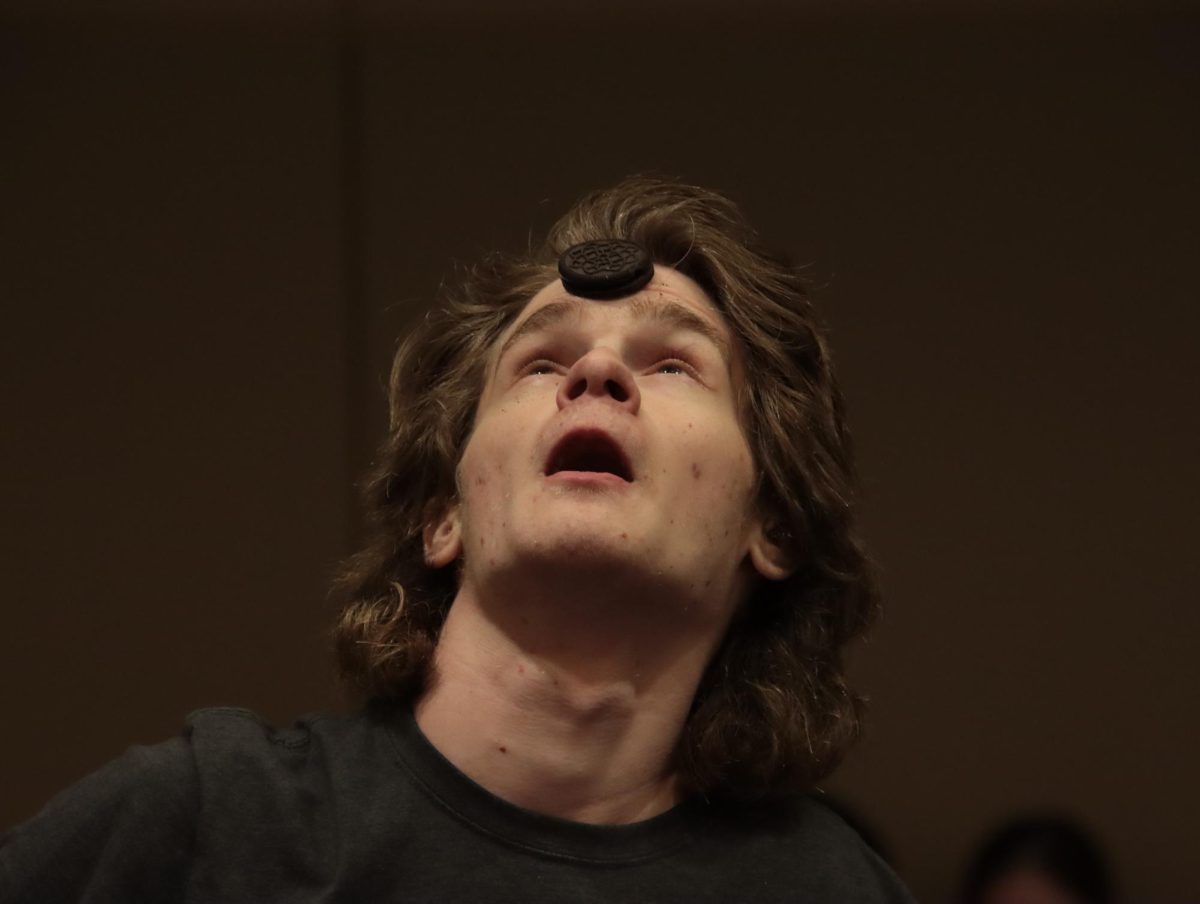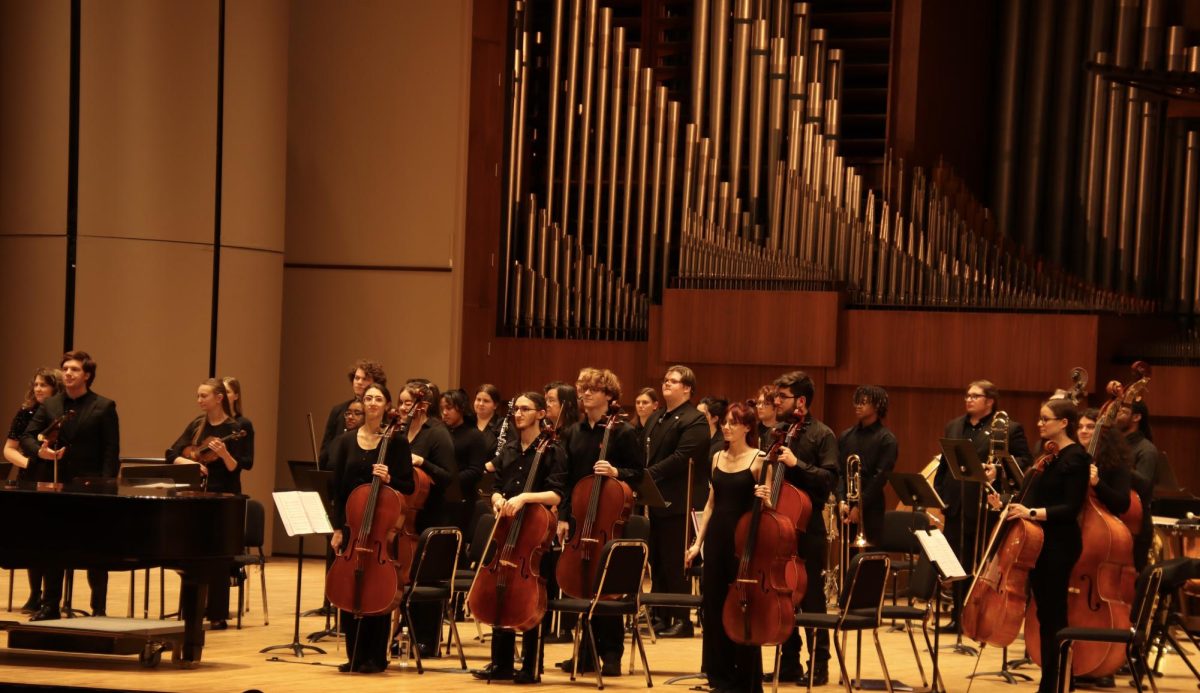Washburn University art department faculty held a faculty artist panel in the Mulvane Art Museum Friday, Feb. 21. Members of the art department discussed the artwork made by the faculty members in Mulvane’s exhibition, “Being Human: Washburn Faculty Artists.”
The exhibition was part of Washburn’s WUmester theme, which is “Being Human.” Connie Gibbons, director of the event, gave a brief rundown of the panel. The first faculty member to talk about their artwork was Marguerite Perret, professor of art, who created the “Plastic Romance Series.”
“The only animal who makes art is human beings,” Perret said. “So being human is being an artist or appreciating art or recognizing that art is essential to being a human.”
Perret’s series is about how we are pitting all of our consumer waste into the environment and the impact that’s having. She was invited for the past two years with the scientists at State University of New York Plattsburgh.
“They [scientists] work with teams on dealing with water and pollution, especially fossil pollution,” Perret said. “I participated in a beach cleanup to explore… and so a lot of the work that you’re seeing in there is based on that idea of the things that are washing up on shorelines.”
Kwok-Pong Tso, assistant professor of art, mentioned how he uses his struggle to incorporate it in his artwork, ”Revolve on Solid Ground.”
“I’m trying to use my work as part of my own storytelling, sharing it with people and hope that, you know, people can join me along,” Tso said.
Tso talks about his past experiences of how he was brought up and his struggles. He talks about the British government ruling over Hong Kong, where he was originally born.
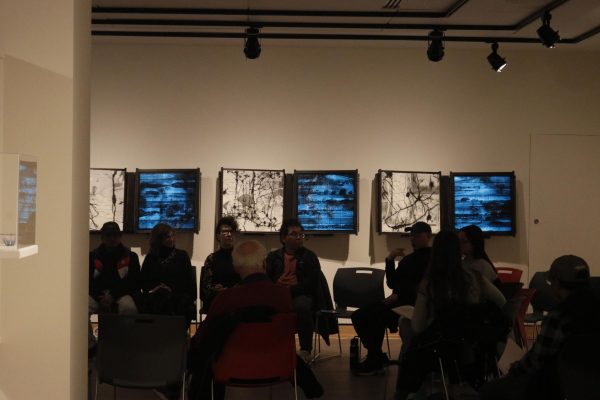
“At the age of 17 to 18, I came to the States and now I’m 30-something, so I spent half my life here,” Tso said. “So that whole entire experience made me, you know, obviously trying to figure out who I am and in terms of what culture I get to keep or, you know, what other new experience that I get to embrace.”
Ye Wang, associate professor of art, shares his journey as an artist and tells the people how different art style is judged from where he is, especially how much importance is given to figure paintings rather than landscape paintings.
“I moved away from China when I was 33 so compared with [Tso], it was pretty late already,” Wang said. “The funny fact is that there are national competitions in China. I felt a couple of times that the jurors said, ‘If any painting without human beings should not win awards…’ So they say figures and humans are the major things in society to reflect what’s going on. There are no landscapes.”
Michael Hager, assistant professor of art, is one of the faculty members in this exhibition who unfortunately couldn’t make it to the event. Instead, Gibbons talked on his behalf for his artwork.
“I think it would’ve been really awesome to hear him talk about these because he’s a printmaker and a sculptor,” Gibbons said. “They’re all about dementia and the loss of a loved one or a parent… It’s a really powerful piece.”
Gibbons talks about how this event is a platform for the audience to communicate with the artist.
“So you know, sometimes you come into a space and you can see the work on the wall and you may have an idea or a notion about what’s going on, but oftentimes it can be really enlightening to hear the artist talking about it and you know what they’re doing to create the work,” Gibbons said.
Gibbon is planning on hosting a similar event soon in March in the Rita Blitt Gallery.
Edited by Jeremy Ford and Stuti Khadka.




